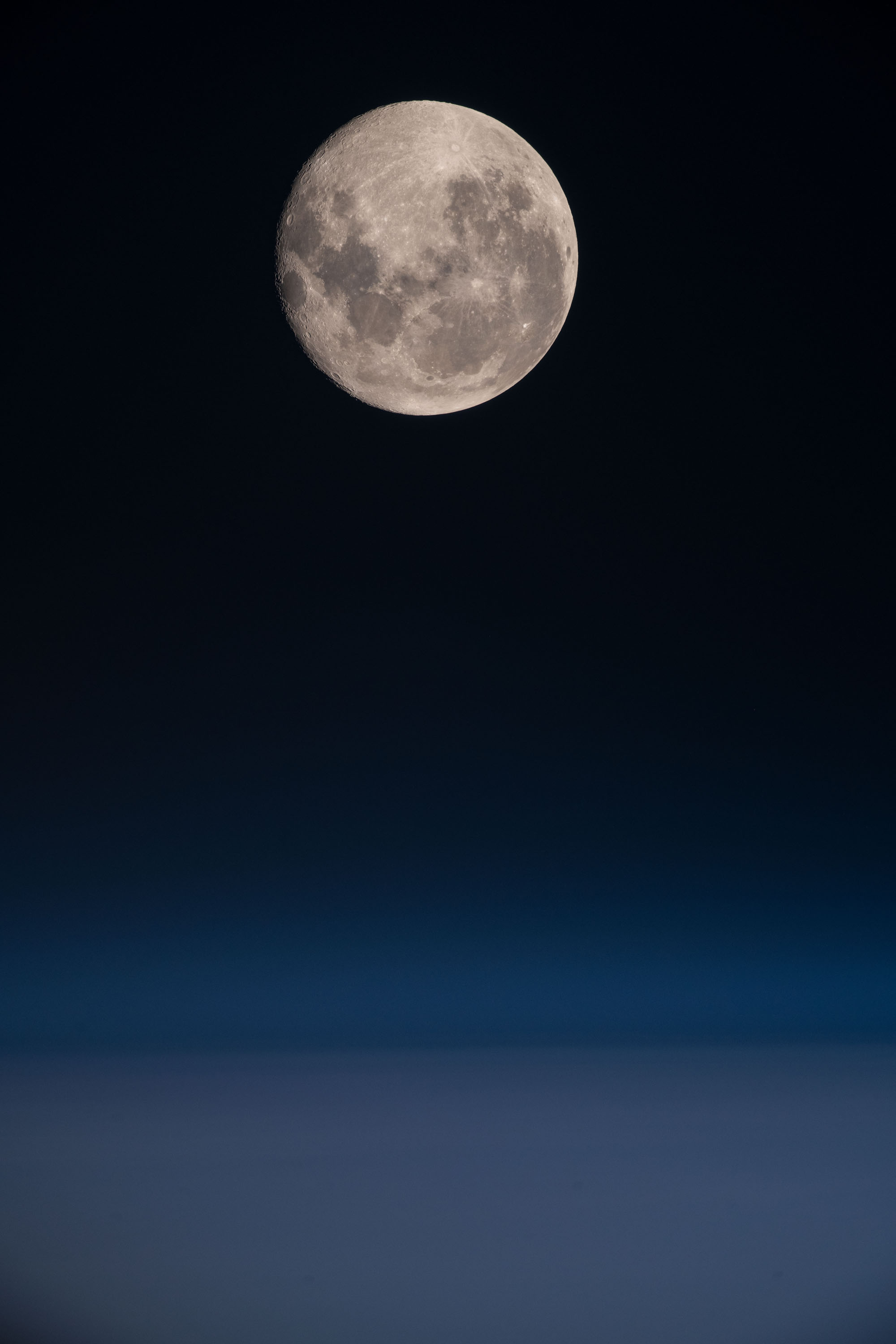The (Nearly) Full Moon of August 2019 Wowed Astronauts in Space. Here's What YOU Can See

The stunning nearly full moon of August gleams in a new photo snapped Tuesday (Aug. 13) by the crew members aboard the International Space Station.
The crew captured this lunar moment while the station orbited 270 miles (434 km) above the South Pacific Ocean, according to a NASA image description.This photo was taken just a couple of days before the full moon, which will appear in the night sky Thursday (Aug. 15).
This full moon is also known as the "Sturgeon Moon," a name which is said to most likely derive from both colonists and Algonquin-speaking tribes in northeastern North America. Not all tribes native to North America use the term.
According to NASA's SkyCal, the moon will officially be full starting at 8:29 a.m. EDT (1256 GMT).
Related: August Full Moon 2019: See the 'Sturgeon Moon'
The night of the full moon, skywatchers can also spot Mercury rising before the sun at 4:39 a.m. EDT (0839 GMT) on Aug. 15. Mercury reached its greatest altitude a few days ago on Aug. 10, but careful stargazers will still be able to see the planet just barely above the horizon.
This brilliant image was also taken close to when the Perseid meteor shower was peaking, which took place overnight Aug. 12-13. Though, while the meteor shower has peaked, it will continue up to Aug. 24. The Perseids come from Comet Swift-Tuttle, and they earned their name becaue they look like they come from the constellation Persesus.
Get the Space.com Newsletter
Breaking space news, the latest updates on rocket launches, skywatching events and more!
However, while it will still be possible to view the meteor shower until this end date, the presence of the bright full moon makes it more difficult to spot. In other years, skywatchers can spot up to 50-100 meteors per hour, according to the American Meteor Society. However, this year that figure is closer to just 10-15 meteors per hour.
- 2019 Full Moon Calendar
- 2019 Moon Phases Calendar
- Moon Photography Tips from Astrophotographers: A Visual Guide
Follow Chelsea Gohd on Twitter @chelsea_gohd. Follow us on Twitter @Spacedotcom and on Facebook.
Join our Space Forums to keep talking space on the latest missions, night sky and more! And if you have a news tip, correction or comment, let us know at: community@space.com.

Chelsea “Foxanne” Gohd joined Space.com in 2018 and is now a Senior Writer, writing about everything from climate change to planetary science and human spaceflight in both articles and on-camera in videos. With a degree in Public Health and biological sciences, Chelsea has written and worked for institutions including the American Museum of Natural History, Scientific American, Discover Magazine Blog, Astronomy Magazine and Live Science. When not writing, editing or filming something space-y, Chelsea "Foxanne" Gohd is writing music and performing as Foxanne, even launching a song to space in 2021 with Inspiration4. You can follow her on Twitter @chelsea_gohd and @foxannemusic.









